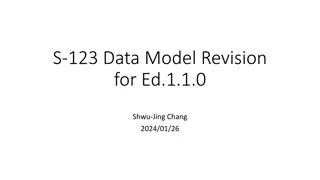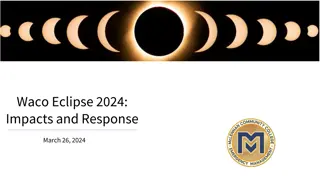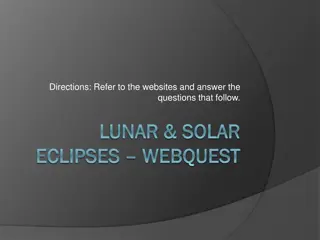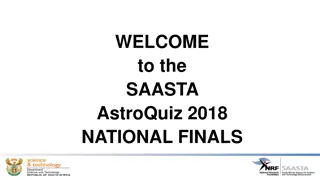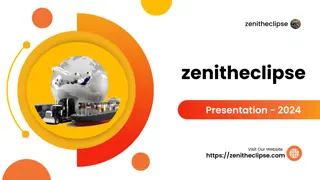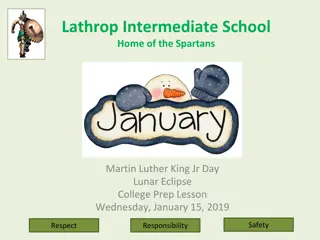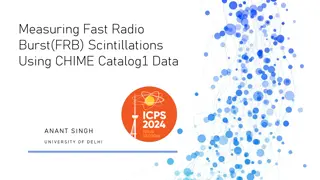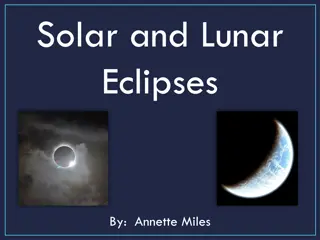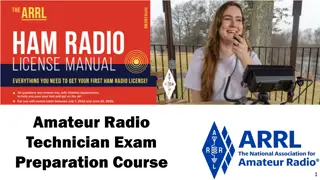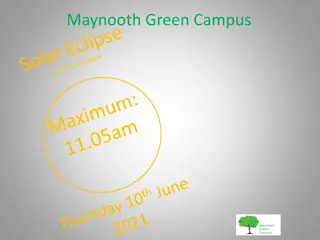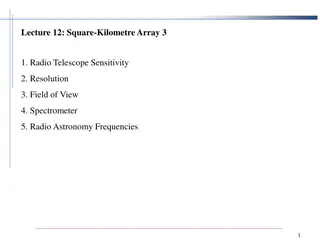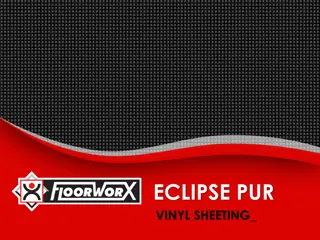HamSCI Experiment and the Eclipse: Advancing Radio Science
The Nashoba Valley ARC hosted an April meeting featuring discussions on E-skip, interactions with University of Pennsylvania students, and a tour of the Haystack radiotelescope. This event marked a new collaboration between NVARC and Haystack for mutual outreach, potential joint activities, and HamSCI experiments to advance radio science. Learn about the upcoming experiment focusing on D- and E-layer propagation, data collection during the total solar eclipse on August 21, 2017, and ways to participate through making contacts on various bands. Dive into the innovative challenge of amalgamating data from diverse sources for analysis in this exciting endeavor.
Download Presentation

Please find below an Image/Link to download the presentation.
The content on the website is provided AS IS for your information and personal use only. It may not be sold, licensed, or shared on other websites without obtaining consent from the author. Download presentation by click this link. If you encounter any issues during the download, it is possible that the publisher has removed the file from their server.
E N D
Presentation Transcript
A HamSCI Experiment NVARC and the Eclipse Join us! 17-Jul-1 de KD1LE 1
Background Pepperell MA, 20 April 2017. The Nashoba Valley ARC (NVARC) was hosted for its April meeting by member Dr Phil Erickson, W1PJE, at the MIT Haystack Observatory. Highlights of the meeting included a talk on E-skip by club member Joe Dzekevich, K1YOW, discussions with 25 visiting students from the University of Pennsylvania, and a tour of the Haystack radiotelescope. Also at the meeting Dr Erickson and Stan Pozerski, KD1LE, announced a new cooperative arrangement between NVARC and Haystack which will encompass (among other things yet to be proposed) mutual outreach to youth, the possibility of joint EME activities, and the conduct of HamSCI experiments. 2 17-Jul-1 de KD1LE
An Exciting Association 3 17-Jul-1 de KD1LE
What is this HamSCI all about? The HamSCI (Ham Radio Science Citizen Investigation, www.hamsci.org/) goal is to advance the field of radio science. An upcoming experiment is a collaboration between HamSCI, ARRL, and the scientific community to collect data to advance the understanding of D- and E-layer propagation. 4 17-Jul-1 de KD1LE
Theres an Eclipse Coming On 21 August 2017, a total solar eclipse will cause the shadow of the moon to traverse the United States from Oregon to South Carolina in just over 90 minutes. NEXT CHANCE SEVEN YEARS AWAY! 5 17-Jul-1 de KD1LE
The 21 August Experiment HamSCI will collect a large data set from the larger citizen population that would not otherwise be available for the Ham and Scientific Community. There is no specific theory or premise supposed here. This data will be used to advance our understanding of D- and E- layer propagation. 6 17-Jul-1 de KD1LE
The Experiment Behind the experiment is the challenge to take data from a variety of semi-scientific sources and combine it into useful information for analysis The sources here are the Solar Eclipse QSO Party contact logs, the Reverse Beacon Network, and the WSPRnet database 7 17-Jul-1 de KD1LE
Many Ways to Participate 1. (EASIEST)Get on the air and make contacts on 160 to 6 meters 1400 2200z (but not 60m or the WARC bands). Modes include CW, Digital and phone. In digital modes send data to PSKReporter if it is an option Transmission format CQ CQ TEST DE callsign for best automated receiving. The exchange is receiving callsign, signal report, six character grid locator, your callsign. Actual Signal strength preferred but 59 or 599 OK Log in software that supports SEQP or ARRL VHF contest exchange. More on SEQP website. Submit a log of your contacts 8 17-Jul-1 de KD1LE
Many Ways to Participate 2. (EASY)Set up WSPR on any sound card configured radio and computer. Monitor (receive only) and report. No CAT, antenna switching, or tuning issues An advantage of WSPR is it runs continuously so more data will be collected With an Internet connection WSPR data can be automatically uploaded to the WSPRnet database But you won t get any QSL cards. 9 17-Jul-1 de KD1LE
Many Ways to Participate 3. (MORE CHALLENGING) Activate a WSPR beacon Any band(s), 160 to 6 meters (but not 60m) Automatically upload reports You ll be both a signal and an information source! 4. (WICKED) An even more complex way is to build and operate a multi-band beacon like the QRP Labs Ultimate3. And add a monitor station And get on the air, too 5. (AWESOME) Help others get set up. 10 17-Jul-1 de KD1LE
How to Create Data Set up as many Internet-connected monitor stations as possible. Put the most stations on the air from 1546Z 1146L to 2104Z 1704L on 21 August. Better if WSPR beacon stations were on for at least a few hours before and after that time. Even better a day either side of that date for reference. Coordinate our activity so we are not all doing the same thing (band or mode) 11 17-Jul-1 de KD1LE
How to Best Support Run WSPR in a single band mode. This gives the finest data resolution over time. (WSPR operates on a 2 minute period which may be transmit or receive starting on the even minutes) Set up on a band 160-6 meters. 40, 20, and 10 meters have the most current activity so try activating other bands. Use a power setting of five watts or less 12 17-Jul-1 de KD1LE
Conclusion Join in! Identify a local coordinator. Let Phil or HamSCI know you re participating. Participation can be simple by just making contacts and submitting your log. There should be a level that everyone can participate and contribute. My personal goal is for NVARC to run 15 WSPR stations. We have twelve WSPR and one QRPLabs beacon committed. 13 17-Jul-1 de KD1LE
References and Links Solar Eclipse Project http://hamsci.org/eclipse Solar Eclipse QSO Party (http://hamsci.org/seqp) WSPRnet homepage http://wsprnet.org/drupal/ Source for WSPR https://physics.princeton.edu/pulsar/k1jt/wspr.html 14 17-Jul-1 de KD1LE
15 17-Jul-1 de KD1LE
WSPR Weak Signal Propagation Reporter Probes radio frequency propagation conditions by using very low power (QRP/QRPp) transmissions WSPR receivers detect and decode, and can directly report to the Internet. You can beacon, or receive, or both. 16 17-Jul-1 de KD1LE
WSPRnet http://wsprnet.org/drupal/ 17 17-Jul-1 de KD1LE
Setting up WSPR Very easy to set up on a radio/computer configured for sound card mode operation Pull down and install WSPR from https://physics.princeton.edu/ pulsar/k1jt/wspr.htm For the basic set-up you only need to enter your call sign, grid square (4 or 6 character), the audio input and output sources and power level in dBm (from a chart in the instructions) 18 17-Jul-1 de KD1LE
Your WSPR Station Connect an appropriate antenna for the band you wish to operate on. Set your transmitter to an appropriate (about 5w) power level. Choose the band/frequency in WSPR and set the radio to the indicated frequency. Set the % transmit slider (20% default). Uncheck the idle box. 19 17-Jul-1 de KD1LE
WSPR Operating Screen 20 17-Jul-1 de KD1LE
WSPR on the air Your computer clock needs to be accurate. By default, Windows syncs to an NTP server once a week (or 604,800 sec). Once a day is better. Reg SpecialPollInterval 86400 sec. Based on two minute periods WSPR will transmit your information or listen for other WSPR signals. More complicated if you want to know? Under the file pulldown save user settings 21 17-Jul-1 de KD1LE
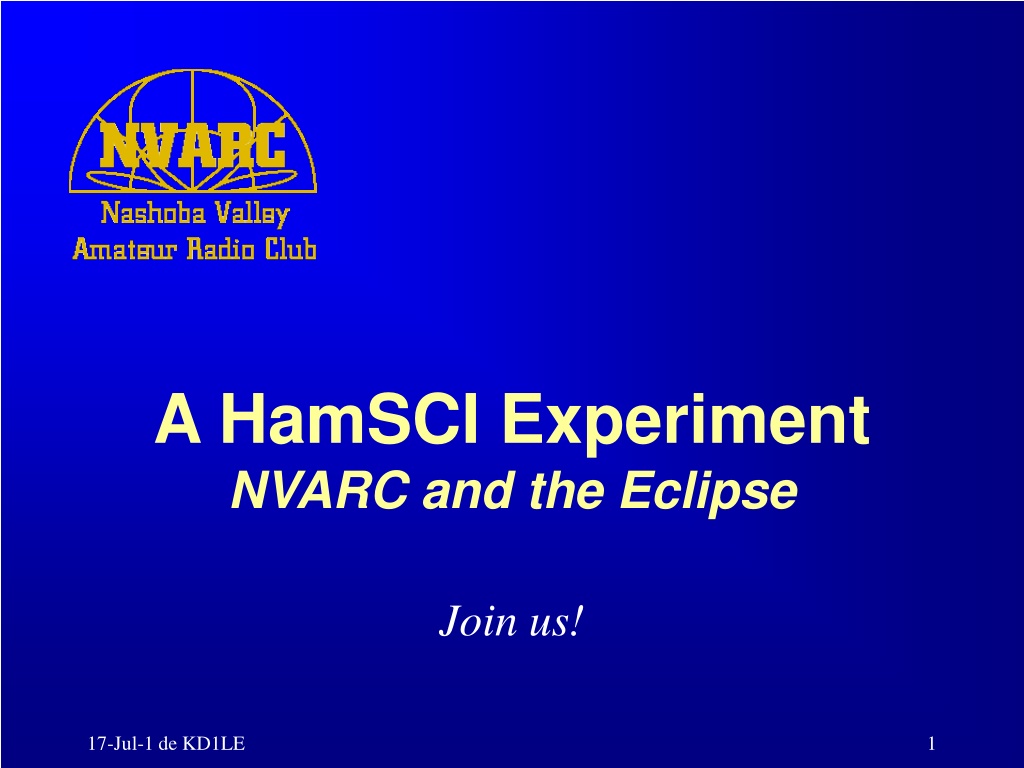

![[PDF⚡READ❤ONLINE] Road Atlas for the Total Solar Eclipse of 2024 - Color Editio](/thumb/21696/pdf-read-online-road-atlas-for-the-total-solar-eclipse-of-2024-color-editio.jpg)

